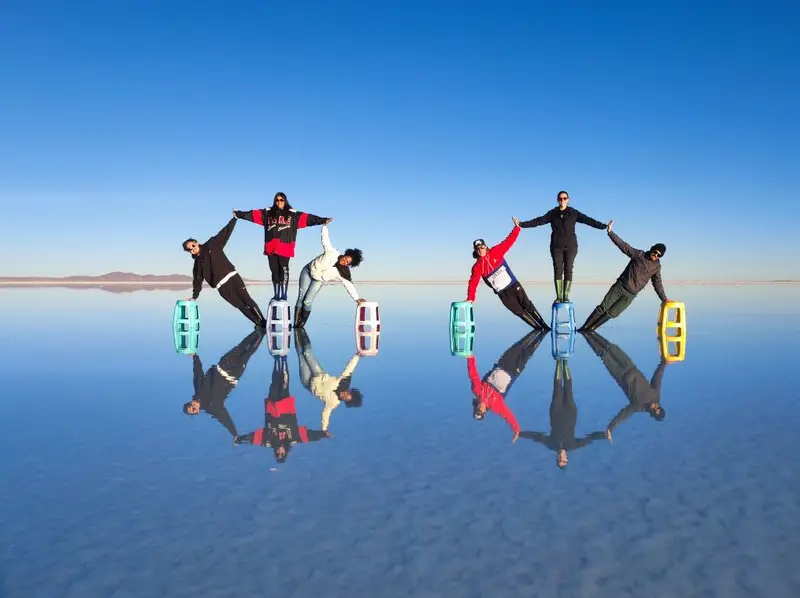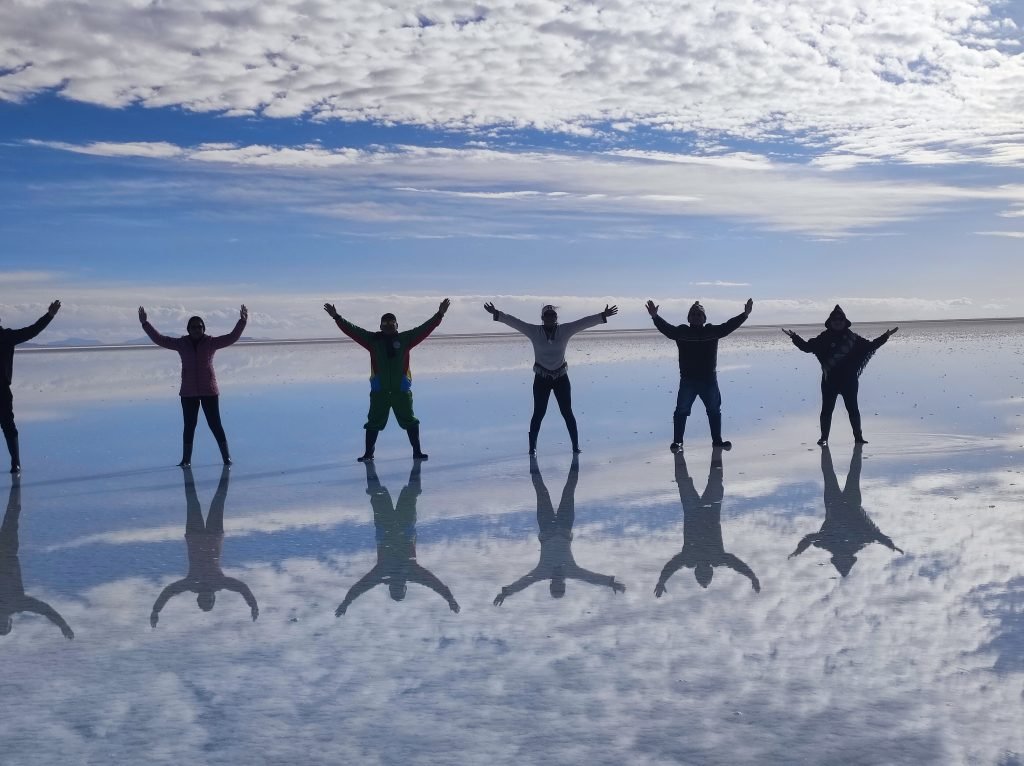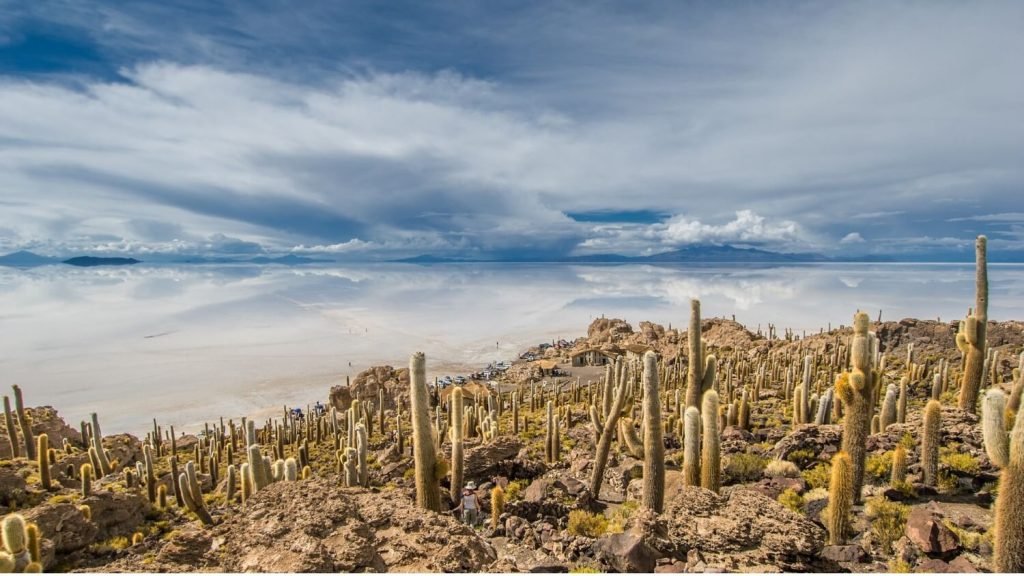In the heart of the Bolivian altiplano lies a natural treasure that captivates those lucky enough to behold it: the Salar de Uyuni, the largest salt desert in the world. In this magical corner, earth and sky merge to create such a unique scenery. When the rain caresses its flat ground, the salt flat transforms into a gigantic salt mirror, earning the title of “the mirror of the world”.
Location of the Uyuni Salt Flat

Located in the department of Potosi, at an impressive 3,650 meters above sea level. The Uyuni Salt Flat extends majestically for 12 thousand square kilometers. This vast salt desert is home to an impressive mineral wealth, with lithium being its most prized jewel. With significant reserves of lithium, used in the manufacture of pharmaceuticals and batteries for electric vehicles. The Uyuni Salt Flat is a major contributor to the global industry.
Access Routes: By Bus and Plane

How to get to this South American paradise?
From La Paz, the Bolivian capital, there are two travel options. You can opt for the adventurous bus ride, which takes 9 to 12 hours overnight. There is also the quicker option: a 45-minute flight from La Paz Airport in El Alto. However, be aware of the altitude, as you will be at 4,000 meters above sea level, requiring precautions to combat altitude sickness.
Ideal time to visit the Uyuni Salt Flat

The beginning of the year, from January to March, is the best time to explore this treasure of the altiplano. During these months, the generous rains transform the salt flat into a gigantic lake less than an inch deep, creating unforgettable optical effects. The fusion between earth and sky reaches its maximum splendor, turning the Uyuni Salt Flat into a unique visual spectacle.
Flood Phenomenon: Nature in Action

The phenomenon of flooding in the Uyuni Salt Flat is due to the accumulation of sediments from multiple rivers that do not find their way to the sea. These same rivers, carrying minerals, originated the salt layer that characterizes the salt flat. The impermeability of this unique saline surface generates the accumulation of water, creating a surreal landscape that defies imagination.
Desert Climate and Unique Experiences
The climate in the Uyuni Salt Flat is desert-like, with little rainfall and an average annual temperature of 10.1 °C. In winter, temperatures can drop drastically, easily reaching -15°C at night. However, during this period, the magic of the salt flat is revealed in its maximum splendor. Magical sunrises and sunsets captivate visitors.
Discovering Additional Treasures
Beyond the immensity of the Uyuni Salt Flat, there are places you should not overlook. Colchani, a small town on the shores of the salt flat, is home to approximately 600 inhabitants. It is the place where the country’s domestic salt is extracted. Here, the daily production of 5,000 kilos of table salt is combined with local craftsmanship. This creates an authentic experience for visitors.




Other unmissable stops in the Uyuni Salt Flat are Incahuasi Island, the Train Cemetery, the Siloli Desert and Arbol de Piedra. Also, do not miss the Colorada Lagoon, the Polques Hot Springs (suitable for bathing) and the Sol de Mañana Geysers. Explore in depth this corner of the Bolivian highlands, with its natural and cultural wealth, standing as a unique destination.





